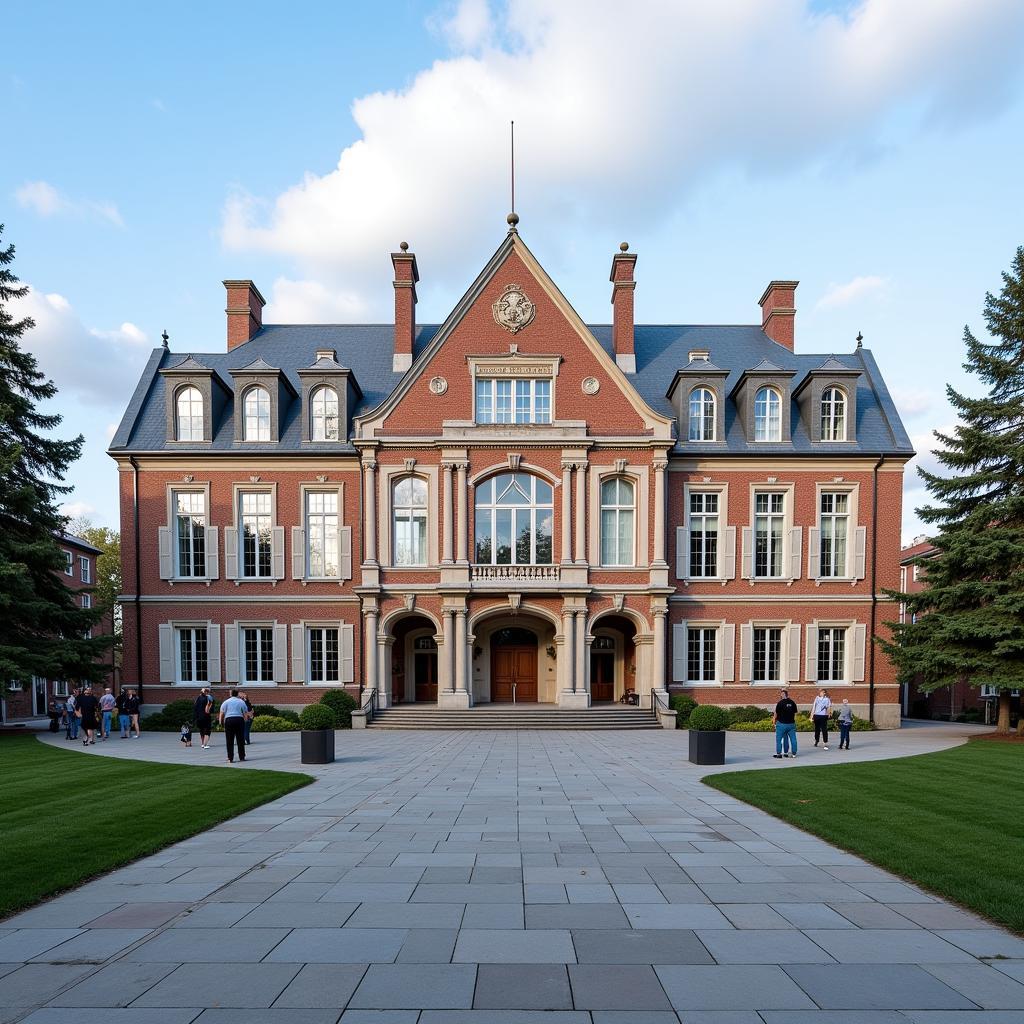The Scott Polar Research Institute (SPRI) stands as a testament to humanity’s enduring fascination with the polar regions. More than just a research facility, SPRI serves as a repository for the intrepid spirit of exploration, preserving the legacy of past expeditions while pushing the boundaries of our understanding of these icy frontiers.
Delving into Polar History at the Scott Polar Research Institute
Founded in 1920, SPRI was established to commemorate the heroic age of Antarctic exploration, particularly the legacy of Robert Falcon Scott and his ill-fated Terra Nova expedition. The institute quickly evolved into a leading center for polar research, attracting scientists, historians, and adventurers eager to unravel the mysteries held within the Arctic and Antarctic.
 Historic building of the Scott Polar Research Institute
Historic building of the Scott Polar Research Institute
Uncovering a Treasure Trove: The Polar Museum
At the heart of SPRI lies the Polar Museum, a captivating space that transports visitors to the icy landscapes of the Arctic and Antarctic. Here, you can find:
- Personal artifacts from legendary explorers: Imagine poring over the handwritten journals of Robert Falcon Scott or examining the clothing worn by Ernest Shackleton during his daring trans-Antarctic expedition.
- Scientific instruments and equipment: Discover the tools used by early explorers to navigate, survive, and study these extreme environments.
- Art inspired by the polar regions: Be captivated by paintings, sculptures, and photographs that capture the stark beauty and unforgiving nature of the poles.
The Scott Polar Research Institute: A Beacon of Scientific Inquiry
Today, SPRI remains at the forefront of polar research, conducting groundbreaking studies on a wide range of disciplines, including:
- Climate Change: SPRI scientists are at the forefront of understanding the impact of climate change on the polar regions, utilizing ice cores, satellite data, and fieldwork to track changes in ice sheets, sea levels, and ecosystems.
- Glaciology: Researchers at SPRI delve into the dynamics of ice sheets and glaciers, examining their flow, stability, and response to climate change, providing crucial insights into future sea-level rise.
- Social Anthropology: SPRI recognizes the importance of understanding the human dimension of the polar regions. Anthropologists study the cultures and histories of indigenous Arctic communities and investigate the social and political implications of polar exploration and resource management.
Looking Ahead: The Future of Polar Research
The Scott Polar Research Institute continues to play a pivotal role in shaping our understanding of the polar regions. As climate change accelerates and human activities increasingly impact these fragile environments, the research conducted at SPRI is more critical than ever. By bridging the gap between scientific discovery, historical preservation, and public engagement, SPRI ensures that the importance of the polar regions remains at the forefront of global consciousness.
FAQs about the Scott Polar Research Institute
1. What are the opening hours of the Polar Museum?
The Polar Museum is open Tuesday to Saturday, 10 am to 5 pm. Admission is free.
2. Can I access the Scott Polar Research Institute’s archives and library?
Yes, the archives and library are open to researchers and members of the public by appointment.
3. Does the Scott Polar Research Institute offer guided tours?
Yes, guided tours of the Polar Museum are available upon request.
4. How can I support the work of the Scott Polar Research Institute?
You can support SPRI through donations, memberships, or by volunteering your time.
Still have questions about the Scott Polar Research Institute?
Contact us at [email protected] or call 0904826292. Our dedicated team is available 24/7 to assist you. You can also visit us at No. 31, Alley 142/7, P. Phú Viên, Bồ Đề, Long Biên, Hà Nội, Việt Nam.